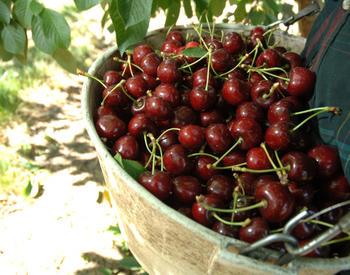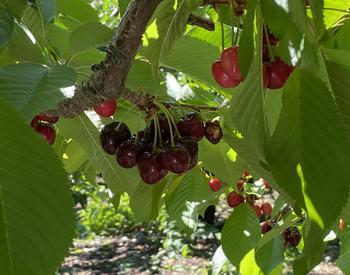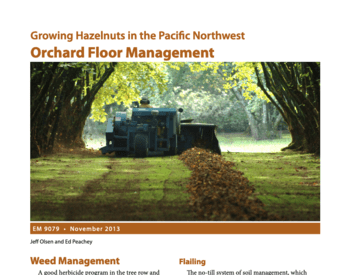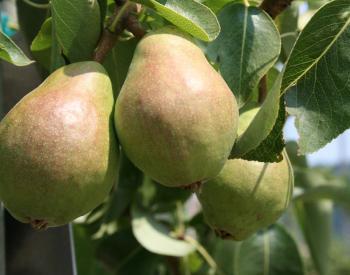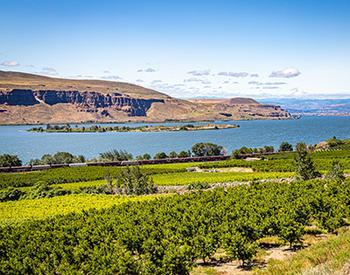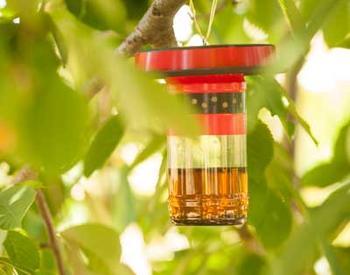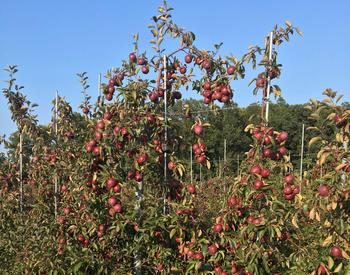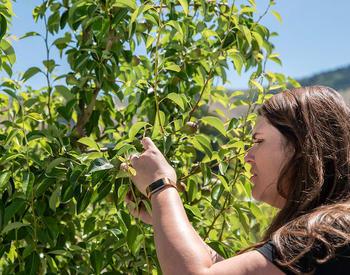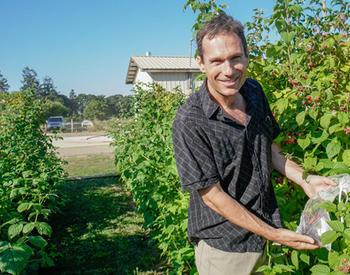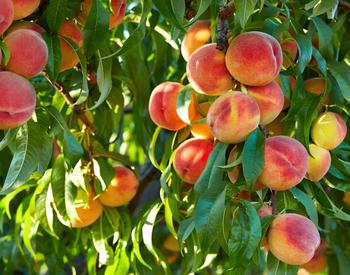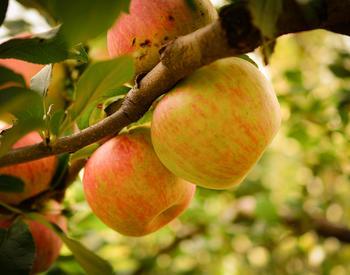In the late 1990s, Oregon growers began utilizing European training systems using small cherry trees that can be harvested without ladders. These "pedestrian" orchards brought higher early yields, potentially higher yields at maturity, easier maintenance, better spray penetration and fewer ladder accidents. Pickers were able to increase their productivity; in one study, picker productivity increased from 100 pounds of fruit per hour with ladder harvest trees to 171 pounds per hour in a pedestrian orchard. Growers could hire fewer pickers, and when labor was in short supply, pickers would choose to work in a pedestrian orchard rather than a traditional block of tall trees.
Growers also could reduce expenses by simplifying the structural development and annual maintenance of the trees. All trees in a block needed to be uniform, so pruning principles could be replicated multiple times, eliminated any need for interpretation by the pruner.
Although the Spanish Bush training system allows a pedestrian orchard, Oregon growers have been unwilling to adopt it due to the perceived complexity of the system. A modification of the Spanish Bush system, developed by Australian grower Kym Green with additional modifications by others, eliminates much of this complexity and has been widely planted.
System development
This system, widely known as the KGB system, is a renewable multi-leader bush system. The early development of this system is similar to the Spanish Bush. Typical spacing on a semi-dwarfing rootstock such as Gisela6 is 16 to 18 feet between rows and 6 to 8 feet between trees. On a full-size rootstock such as Mazzard, the usual spacing is 18 feet between rows and 10 feet between trees. Here are some other tips:
- Head trees at planting 24 inches above the ground.
- Leave at least three or four live buds located below the cut.
- Allow lateral branches to grow during the spring to a length of 24 inches. If adequate growth is obtained by early summer, then cut branches back to a length of 4 to 6 inches at this time.
- Stub length is dependent on branch vigor, with stronger branches cut more severely than weaker branches. This cut will leave small stubs that will multiply the number of branches. If the first-year growth is slow, leave these first heading cuts until the next dormant season (Fig. 1).
Repeat this step at least one more time in the dormant to the early summer period. After 24 inches of growth, the branches are cut back to 4 to 6 inches. After two heading cuts, the tree should have somewhere around 20 branches. This is enough for a tree grown on a semi-dwarfing rootstock.
However, if the tree is on a full-size rootstock such as Mazzard, a third heading cut will be needed so that a total of 30 branches are formed. Multiple branches help to moderate the growth and control the tree vigor.
Renewal process
Once the basic structure is formed, thin out a few branches in the center of the tree to allow good light penetration to the interior. Twelve to 15 upright leaders will be left on a tree grown on a semi-dwarf rootstock and around 25 branches on a tree with full size rootstock.
To this point, there is no difference between the Spanish Bush system and the KGB. Although both systems are characterized by a renewal process of the fruiting wood, the position of the fruiting wood is different between the systems. With the Spanish Bush system, the upright leaders tend to be permanent, and fruit is borne on the renewable lateral branches. The KGB differs in that the development of lateral branches is deemphasized and the fruit is produced on the renewable upright leaders.
A four-step annual pruning process can take place in the late summer or early fall if vigor reduction is a goal or during the dormant season if there is a need to maintain or increase the vigor of trees grown on semi-dwarfing rootstocks.
The first step in the annual pruning regime is the renewal process. Since the largest fruit is grown on young spurs, all fruiting wood in the tree should be renewed within a period of five years. To maintain the leader rotation, stub back 20% of the leaders, focusing on those with the largest diameter. This may be three to four on a semi-dwarf tree or four to five on a full-size tree. Stubs should be eight to 12 inches in size. It is important that sunlight is able to penetrate to the stub, or it will not regenerate. Besides keeping the fruiting wood young, these stub cuts have the added purpose of reducing the fruit set; an important consideration when growing very productive varieties or trees on productive rootstocks.
Next steps
Step two consists of removing all lateral branches except those facing the outside of the plant (Fig. 2). If this step is conducted immediately after harvest, the laterals can simply be ripped out of the tree. If it is a part of the fall or winter pruning, these laterals will need to be pruned out.
Buds at the terminus of all 1-year-old shoots tend to grow more densely than those at the base. As these buds mature into fruit-bearing spurs, there is considerable potential for an imbalance in the leaf-to-fruit ratio, which can lead to poor quality fruit. This is particularly true with productive varieties such as Sweetheart and Lapins on any rootstock or most varieties grown on productive rootstocks, such as the Gisela series.
Step three addresses this potential imbalance by removing these dense buds at the branch tip with a heading cut that removes one-third of the previous year’s growth on all branches.
The final step limits the maximum height of the tree to 8 feet. Heading cuts that regulate the overall height are always made in late summer or early fall. This timing will help to moderate the vigor in the top of the tree.
Whether trees are grown on full-size or semi-dwarf rootstocks, the KGB system will produce a true pedestrian orchard. In addition, a simple, repeatable pruning process even allows unskilled workers the ability to quickly learn the system, reducing mistakes and the time it takes to prune.
